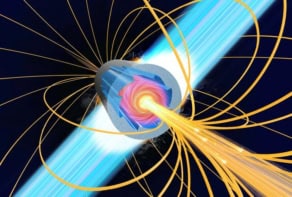The many achievements and uses of the electron have been widely celebrated this year. Photonics has not yet had the impact of electronics, although the interdisciplinary subject of optoelectronics underpins the whole communications industry.
For a particle with no mass and no charge, however, the photon has certainly made its presence felt, as highlighted by many articles in this issue. Semiconductor lasers have carved out huge niches in the communications and consumer-electronics industries, but physicists are always looking for ways to improve the performance of these devices. Laser-based fluorescence techniques play a key role in the international efforts to unravel the secrets of the human genome, while optical tweezers are routinely used to manipulate a variety of specimens in biological laboratories. Laser ultrasound is now an established technique for non-destructive testing in the aircraft industry and the establishment of standards for visual performance in twilight conditions has also been the subject of recent research.
Although it is still not possible to control single photons, meaningful experiments with pairs of correlated photons are now commonplace (albeit by using only about one pair in a million) and this work could lead to a new era of quantum information technology. Like computers, lasers are getting ever smaller and ever faster, although there is still the odd behemoth the size of a football pitch, and the ultimate dream of the optical computer seems a long way off.
In plasma physics, X-ray lasers are edging towards the so-called water window between 23 and 44 Angstroms. Absorption by water is minimal in this biologically interesting wavelength region. Laser and accelerator-based radiation sources are also converging: sub-picosecond X-ray pulses have been generated in prototype experiments by scattering ultrashort laser pulses from 20 MeV electrons. And the next (fourth) generation of synchrotron radiation sources will almost certainly be free-electron laser sources. In these machines bunches of electrons from a linear accelerator emit light when they are forced to “wiggle” through arrays of magnets.
And now the E144 collaboration based at Stanford in the US has achieved “pair production” in light-by-light scattering for the first time. In other words, they have produced photons so energetic that they can annihilate into electron-positron pairs when they scatter. The E144 team shone a high-intensity laser at a beam of 46.6 GeV electrons. The laser wavelength corresponded to a photon energy of 2.35 eV, and Compton scattering from the electrons boosted this to 29.2 GeV. The pair production occurs in a multiphoton scattering process that involves four laser photons and one Compton-scattered photon. This is distinct from the fairly common process whereby two particles annihilate to produce a virtual (or short-lived massive) photon that then decays back into a particle-antiparticle pair.
Another fertile area of research at the interface between lasers and particle physics is the use of plasma waves to accelerate particles. Experimenters have confirmed that fields of 100 GVm -1 can be generated in a laser-produced plasma – and have accelerated electrons in these fields. However, plasmas are riddled with instabilities and other disruptive events, and accelerator builders have not yet abandoned more reliable tools such as magnets and cavities.
Seventy years ago the 5th Solvay conference in Brussels was devoted to the theme “electrons and photons”. The great debate between Einstein and Bohr about the interpretation of quantum theory started in Solvay. If he were alive today, Einstein might be upset to learn that his doubts about quantum mechanics have been largely overlooked, but he would surely be pleased to know that people are still using electrons and photons to prove that E=mc 2.


